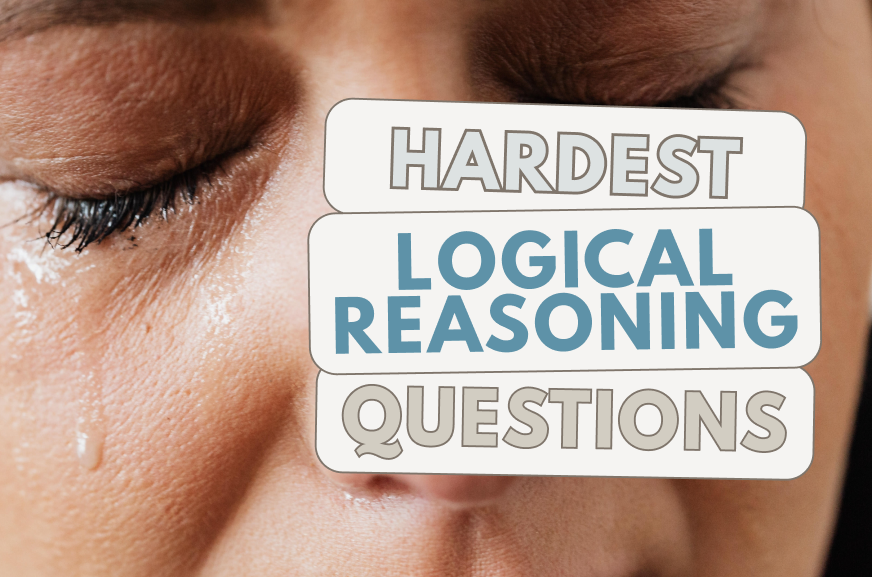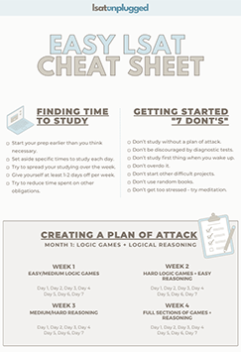Today, I’ll show you how to approach 5 difficult LSAT Logical Reasoning questions. Students ask me to explain these questions all the time, so I’m using this week’s main post to do so. I’m not posting the actual questions because I don’t want to get a visit from the folks at LSAC (although I’m sure they’re wonderful people). Here’s where to get the actual LSAT PrepTests.
Also, here are some other Difficult LSAT Logical Reasoning Questions.
1. Reproductive abnormalities in fish and whether or not they’re caused by dioxin (PrepTest 45 – December 2004 LSAT, Section 1, Question 12)
Evidence: Even after a mill shut-down, dioxin decomposes slowly. During shutdowns, fish hormone levels quickly return to normal levels.
Conclusion: Dioxin probably isn’t the cause of abnormalities.
Question stem: “Which one of the following statements, if true, most seriously weakens the argument?”
Explanation:
If normal river currents move dioxin far downstream in only a few hours, then the fish should be in clean water. It wouldn’t matter whether the dioxin decomposed or not because it already left the area.
Wrong answer choices:
A – Weakens it a little bit, but not enough.
B – Irrelevant. The rate of dioxin decomposition doesn’t matter.
D – Refers to physiological, not reproductive, so it’s too broad.
E – Too broad AND irrelevant.
The correct answer is C.
2. PrepTest 38 (October 2002 LSAT), Section 4, Question 16 – page 346 in Next 10
(the question discusses: people, distrust, confident, abilities, challenge)
Evidence group: People who do not believe that others distrust them
Conclusion group: People who tend to trust others
Question Stem: “The conclusion above follows logically if which one of the following is assumed?”
This is a sufficient assumption question.
After identifying each piece of the stimulus, we can arrange them like this:
Evidence: Not Believe Others Distrust —> Confident —> Difficult Task as Challenge
Conclusion: Tend to Trust Others —> Difficult Task as Challenge
We could diagram this as:
Evidence: NOT BOD —> C —> DTC
Conclusion: TTO —> C —> DTC
The necessary condition (regarding/thinking about each difficult task as a challenge rather than as a threat) is the same for both. Why? Because the final clause (“since this is precisely how…”) supports the part of the conclusion that states “think of a difficult task as a challenge…” Since we know that “Difficult Task as Challenge” is a necessary result of “Confidence,” we can put DTC after C in the evidence.
The cleanest way to close the gap is to say everyone in the conclusion’s group of people (“people who tend to trust others” = “TTO” ) falls within the evidence’s group of people (“people who did not believe that others distrust them” = “NOT BOD”).
Choice C says this word for word.
The key is in noticing the evidence group and conclusion group are really discussing two different groups of people, and we don’t know anything about how they relate to each other.
As always, try not to get overly involved with (or scared by) the topic of the argument. Instead, focus on its structure.
3. Rattlesnake’s age determined from # of sections in its rattle (PrepTest 30 – December 1999 LSAT, Section 2, Question 22 – page 60 in Next 10)
Evidence 1: If rattles were not so brittle
Evidence 2: A new section of rattle forms whenever rattlesnakes molt
Conclusion: One could determine rattlesnake age by # of sections in rattle.
Question stem: Which one of the following is an assumption the argument requires in order for its conclusion to be properly drawn?
Explanation: We’re looking for something that “must be true” in order for the argument to work. Therefore, if we negate each answer choice, we’ll find the correct answer choice by seeing which one, when negated, causes the argument to fall apart.
A. This answer choice is sufficient for the argument to work, but it doesn’t have to be true for the argument to work. The length of the interval doesn’t matter as long as there is regularity to the molting rate.
B. This answer choice is irrelevant. We don’t care what the rattles look like.
C. This negation strengthens the argument. In its original form, it weakens the argument.
D. We don’t care about brittleness’ relationship with lifespan.
E. This negation destroys the argument. We need rattlesnakes to molt at regular, predictable rates if we are to determine a rattlesnake’s age by the number of sections in its rattle alone.
E is correct because it eliminates the possibility that food availability alters the rate at which rattlesnakes molt.
Also see: Necessary Assumption Question: The Rattlesnake Folktale
4. Beethoven Mercury Venereal Disease (PrepTest 28 – June 1999 LSAT, Section 3, Question 16 – page 337 in 10 More)
Evidence: People who had venereal disease in Beethoven’s time often ingested mercury as a cure.
Conclusion: If there’s mercury in Beethoven’s hair, then he had venereal disease.
The argument is flawed because it confuses necessary and sufficient conditions (also known as the converse or mistaken reversal fallacy). Having VD is sufficient to lead to the conclusion that someone may have ingested mercury. (so if VD -> maybe mercury). However, this is not equivalent to saying that if someone ingested mercury, then they probably had VD. There may have been other reasons to ingest mercury. Perhaps it treated other diseases also.
If we negate each answer choice, we’ll find the required assumption.
A. It doesn’t matter if some mercury can be eliminated.
B. If everyone in Beethoven’s time ingested mercury, then mercury in his hair is not proof of VD.
C. It doesn’t matter if mercury is an effective treatment for venereal disease or not.
D. It doesn’t matter if mercury poisoning causes deafness or not.
E. A comparison of Beethoven and Newton is not necessary.
B is correct.
5. Gutenberg Bible, B-36 Bible, Vinland Map, and presence of titanium (PrepTest 12 – October 1994 LSAT, Section 1, Question 24 – in 10 Actual)
This stimulus contains two arguments:
Argument 1
Evidence: Titanium is in both Gutenberg’s Bible and the B-36 Bible
Conclusion: Gutenberg is the probable author of B-36 Bible.
Assumption: Gutenberg is the only person likely to have used titanium ink.
Argument 2
Evidence: Titanium is in both Gutenberg’s Bible and the B-36 Bible (yes, same evidence as previous argument).
Conclusion: Vinland map could have been written i
n this time period.
Assumption: Gutenberg is NOT the only person likely to have used titanium ink.
Question stem: “The reasoning in the passage is vulnerable to criticism on the ground that…”
Explanation: This stimulus contains contradictory assumptions. It assumes that titanium ink is rare enough for Gutenberg to be the only person to use it, but it also assumes titanium ink was common enough for others to use it.
A is correct because it identifies this contradiction.

